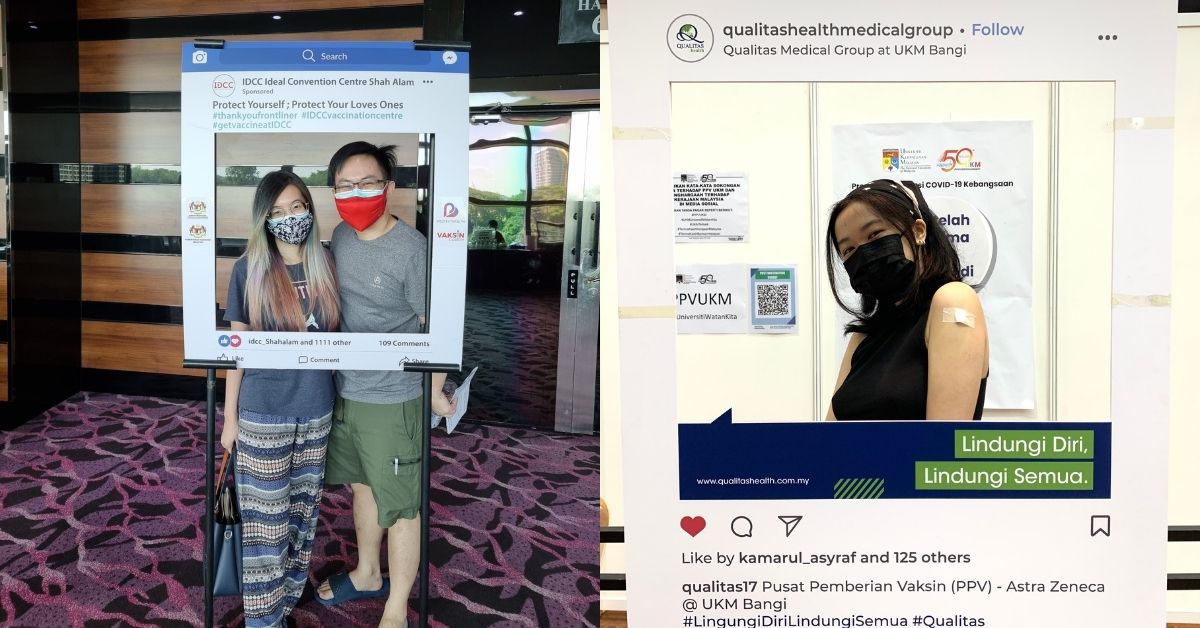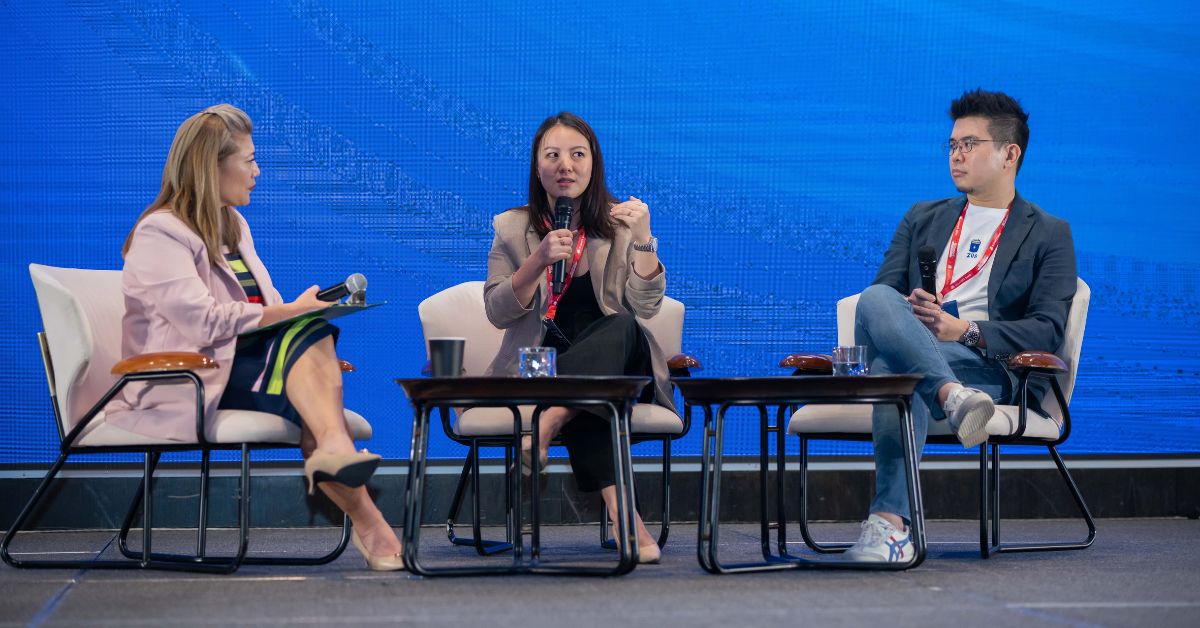On your social media, you may notice that more Malaysians are getting vaccinated by the day (for the first dose at least), but we’re still far from even a quarter of the entire population. As of June 16, 2021, just over 3 million Malaysians have been vaccinated out of the 13 million who registered.
If you have seen stories of your friends getting vaccinated, you probably have a rough idea of what the process is like.
The procedure of every location may slightly vary though, and we’ll shed some light on what you can expect from other vaccination locations from my and my colleagues’ experiences.
Different waiting periods and lines
My vaccination took place at UKM, Bangi, whereas my colleague’s was at PWTC, and my boss’ was at IDCC Shah Alam.
Waiting time, as you’d expect, was longer at PWTC than it was at UKM and IDCC since it’s the more commonly selected venue. All in all, it took less than an hour for both my boss and me, whereas for my colleague it was a little over an hour and a half.
If you’re thinking of arriving earlier, do note that not all these locations actually allow you to enter earlier though. I arrived half an hour earlier and was allowed in, and my colleague arrived 15 minutes before his appointment and was also let in.

My boss on the other hand arrived 5 minutes before hers, but shared that if people came too early (more than half an hour), they were asked to leave the line. One thing she overheard from the guard though was that if senior couples had different time slots, they were still allowed to go in together.
In general, to avoid overcrowding, do not go to your vaccination venue too early. And bring your own pen for filling up the vaccination consent forms. You can opt to print out this form here and answer the questions first, but leave the signature section blank as you’ll have to sign that before a witness (staff) at the venue.
A slight hiccup that my colleague experienced in PWTC was a messy first checkpoint. To find the waiting line, he had to ask a few policemen for guidance because there were no clear signs or labels as to where his station was.
For UKM, I got to sit on chairs while waiting in line from start to finish the whole time. PWTC on the other hand had chairs for some sections only, whereas in IDCC there were chairs available during the briefing just before entering the hall and at every station, but not while queuing to enter the venue.
I actually got to my first station in around 5 minutes, so waiting outside the hall wasn’t too long for me, but the queue is much longer (around 20 minutes) for locations like PWTC to reach your first station.

Since it’s quite likely that you’ll be standing instead of sitting when in line, it’s advisable to wear comfortable shoes just in case you have to stand for a long time. For IDCC, you fortunately get to queue up in a shaded parking building.

Vaccination and observation
To keep the line moving and smoothen the process, you should stay alert while waiting for your turn in the respective stations.
I got a number for my turn to be vaccinated, but I was still guided by the volunteers and frontliners when my number popped up. For my boss in IDCC, moving from station to station was akin to being in a bank, where you have to keep watch for your number to appear on the LCD screen.

For the most part, the vaccination process went well for all of us. My boss and I went through a 15-minute observation time, whereas my colleague at PWTC went through a 30-minute one.
The actual jab takes less than 2 minutes. My boss and I felt localised soreness on our arms during the observation period, which is quite normal when receiving an injection. You’ll be recommended to get jabbed on your non-dominant arm, because the soreness would get in the way of work and usual activities.

Not everyone gets goodies
We could also record our vaccination process on our phones after getting consent from the frontliners, but I recently saw on several friends’ stories on Instagram saying that they weren’t allowed to anymore. It’s best to ask for permission before recording anything with your phone when you are in the vaccination tent.
In light of the recent allegations regarding reduced vaccine doses, it’s understandable that we’d want to document the process just in case it happens to us. But since this is no longer allowed at certain places, it’s best to check with your medical personnel that you’re getting 0.5mL of the vaccine before they inject you.
If you’re afraid of needles or fearful of the vaccination process, the frontliners are quite encouraging and supportive, which helps ease the nerves a whole lot. At IDCC, during my boss’ session at least, there were actually frontliners stationed right outside the vaccination tent to congratulate you after receiving the vaccine, which is a nice and thoughtful touch. In fact, IDCC also gave away Milo goodie bags at the exit (1 bag per vaccination card).

While it’s nice to receive these things, you could also give the frontliners and volunteers some small gifts yourself to thank them for their hard work over long periods of time. It’s also good to be cordial and patient with them while they assist you through your vaccination process. By following their instructions and moving swiftly from one station to another, it would greatly help quicken the process for others too.
And to make things safer for everyone, it’s best to avoid crowding at the photo booths and leave immediately once you’re done taking your picture.
Women and younger people are more likely to get side effects
Some advice that I’ve gotten from the medical personnel during observation time is to put a cold pack on your sore arm to ease the pain at home, and take Panadols when/if the fever kicks in.
I also learnt from some nutritionists that besides water, it’s advisable to consume drinks with electrolytes to help with recovery, so I prepared about 3L of 100 Plus and some fever patches to help me through my side effects.
All my side effects only began at the 9th hour after vaccination—high fever, light-headedness, sinus, fatigue, body aches, and headaches. I actually lost my appetite as well and crashed for the entire day. Note that I’m 23 this year. My condition improved later in the evening at around 9PM when I was only left with light-headedness and cold sweats.

For my boss who’s 32, however, she had an improved appetite and even the energy to work and do house chores despite having a 38.2-38.5°C fever and similar side effects to me. She did note though that the severe headache made it troublesome for her to fall asleep, though she actually already felt sleepy by 7PM on the day of the vaccination.
Her husband, who’s 35, experienced the same fever range as she did, with a low headache and sore body aches, but was also able to work as normal with occasional naps. He felt normal by the third day after vaccination.
My colleague, who’s 30, experienced only a sore arm, and had trouble falling asleep because he wasn’t feeling sleepy.
Age is actually a factor in how intense your side effects can be. Women generally experience more side effects than men, and younger people more than older people. However, the intensity or absence of side effects is independent of the vaccine’s efficacy.
A person’s reaction to vaccines ultimately boils down to the innate differences in each person’s biochemical makeup, environment, and personal history. Those who didn’t experience side effects still had 90% protection from the shots, according to Pfizer and Moderna clinical trials.
Last words of advice
Even though your body may not react as intensely as mine did to the vaccine, it’s still advisable to apply for a medical leave for the day to fully rest and get back to normal with an upgraded immune system.
It’s also good to check in with your doctors on what drugs you can or cannot take prior to the vaccine. Generally, medications for blood pressure, diabetes, and asthma are okay to consume, but you should be cautious of short interval times between two different vaccines.
If you have nobody to drive you to your appointment, there’s nothing to worry about as well because the symptoms won’t kick in so quickly, and so far, my family members who went alone commuted to and fro safely.
TL;DR
| Before the vaccine | During the vaccine | After the vaccine |
| – Check in with your doctors on what drugs you can or cannot take – Do not go to your vaccination too early as you may not be let in and overcrowd the place instead – Bring your own pen to avoid unnecessary contact – Wear comfortable shoes in case you have to queue standing for a while | – Stay alert while waiting for your turn so you don’t hold up the line – Ask for permission before recording the jab – Check with your medical personnel that you’re getting 0.5mL – Be cordial and patient with the frontliners – Avoid crowding the photo booths after your jab | – Put a cold pack on your sore arm – Consume drinks with electrolytes – Apply for a medical leave – Rest as much as you can |
- You can read more COVID-19 articles we’ve written here.
- You can read more opinion pieces we’ve written here.
Featured Image Credit: Vulcan Post









